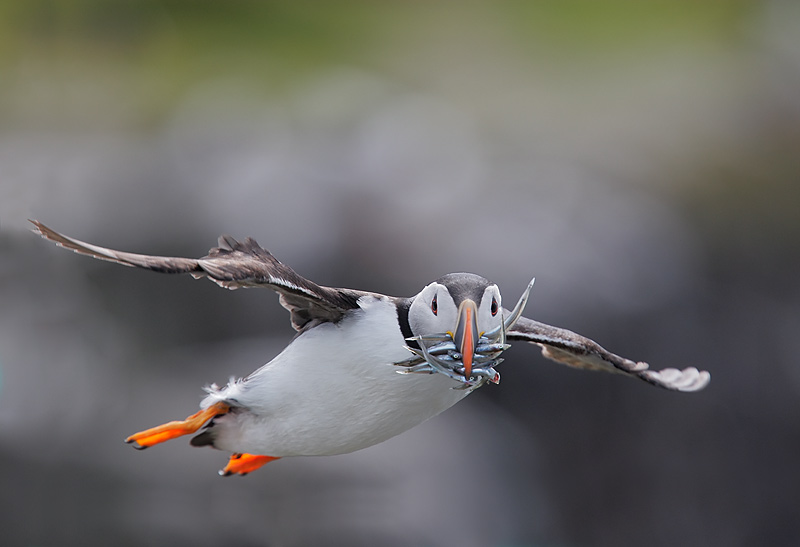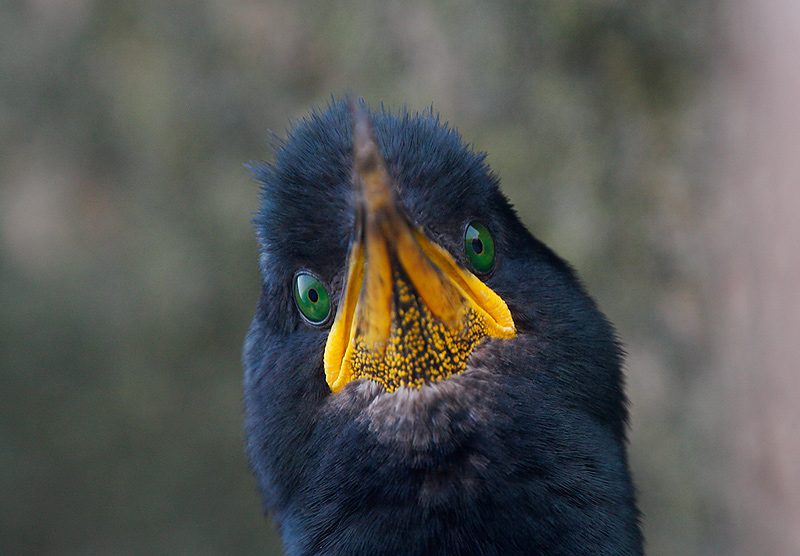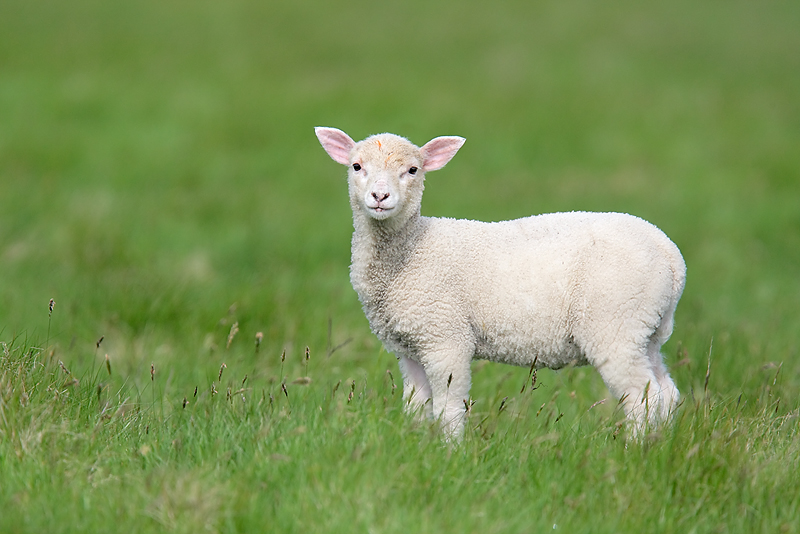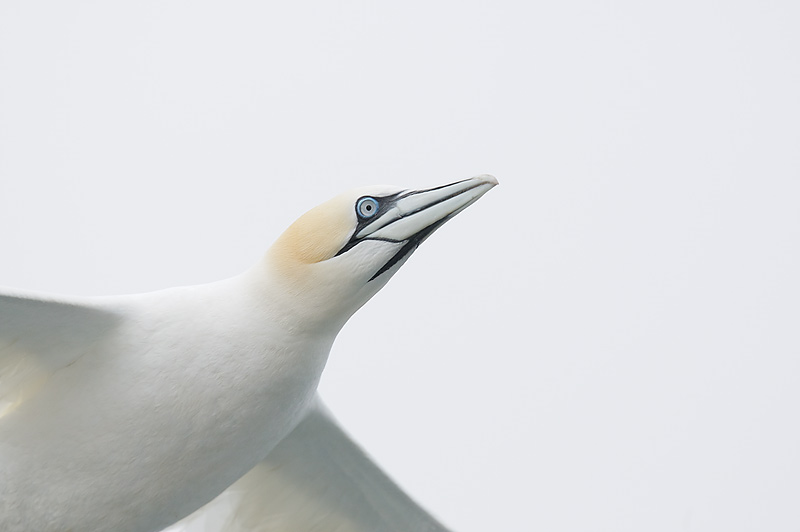Visit www.birdsasart.com
WILD BRITAIN TRIP REPORT & PICTORIAL
BPN
Contact us by phone at 863-692-0906 (Eastern Time Zone) or by e-mail at birdsasart@att.net or @verizon.net. The att e-mail address is best from overseas.
We gladly accept credit card orders by phone from
Note: maximize this e-mail for best formatting.
Important Request: if responding to this e-mail, please take the time to delete all images and all irrelevant text.
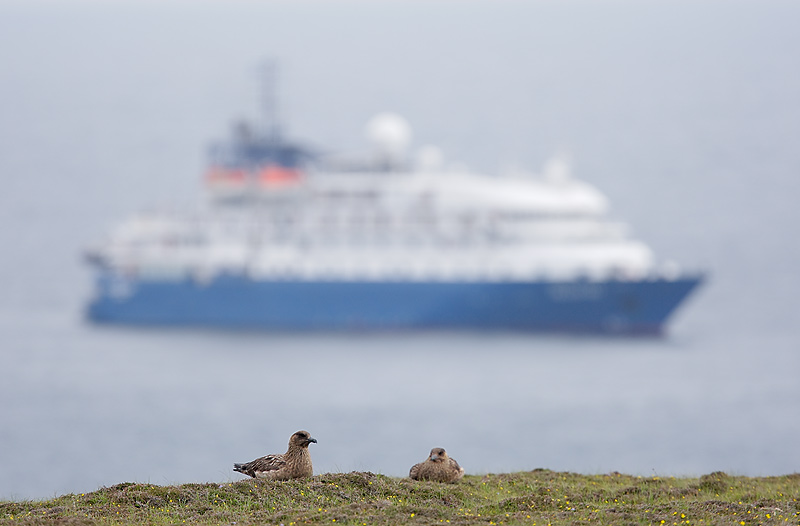
Great Skua pair and the MV Island Sky, Fair Isle, Scotland
Image copyright 2008: Arthur Morris/BIRDS AS ART
Canon 400mm f/4 IS DO lens with the 1.4X II TC (handheld) with the EOS-1D MIII. ISO 400. Evaluative metering +2/3 stop: 1/500 sec. at f/8. Fill flash at -2 stops.
I visualized this image as I approached the skuas resting near the cliff edge and saw the anchored ship in the background. To create the juxtaposition, I lowered the tripod by releasing the leg tab and pulling out the front leg.
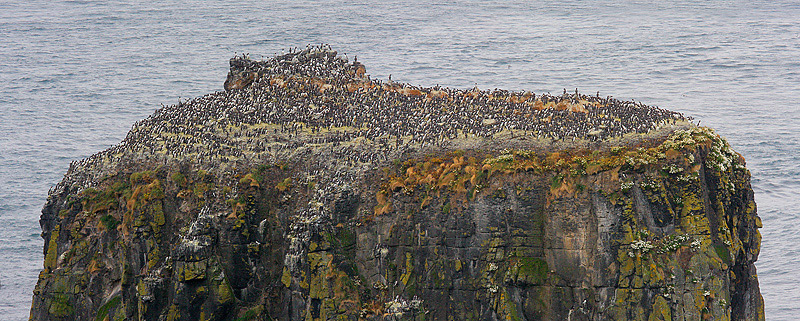
Sea Stack with breeding Common Murres, Rathlin Island, Northern Ireland
Image copyright 2008: Arthur Morris/BIRDS AS ART
Canon 400mm f/4 IS DO lens and the EOS-1D MIII on the Gitzo CF 3530 LS tripod and the Mongoose M3.5. ISO 500. Evaluative Metering +2/3 stop: 1/640 sec. at f/5.6.
I created this stitched panorama (and lots more on the trip) using the Photomerge feature in Photoshop CS3. First, convert the RAW images to be stitched, then browse through to them via File/Automate/Photomerge, then highlight the files and click OK. (I have always used the Auto setting but you might wish to experiment with the other settings and compare the results.)
BACK ON THE ROAD AGAIN
On June 12, at the conclusion of the Zegrahm's Wild Britain cruise I flew from Edinburgh, Scotland to JFK to Orlando where I over-nighted. I am preparing this Bulletin on an Air Canada fight to Montreal, Canada where I will be staying at the Airport Hilton. A friend is picking me up at 4am on Thursday morning. We will then drive to Bonaventure for five days of gannnet photography. I will be out of the office until Monday, June 23. Please hold off on sending your photography-related questions until my return. Thanks! Jim and Jennifer will be here to help with your mail orders, most equipment questions, and your IPT and Portland Seminar registrations. Note: Jim will be out of the office from June 18-25. Jennifer will have limited hours from June 18-20, and will be away from June 21-26. Arthur will start catching up with your email orders and phone messages when he returns from Canada. Thanks for your patience. Be safe, breathe deep, have fun, and make some great images until I get back.
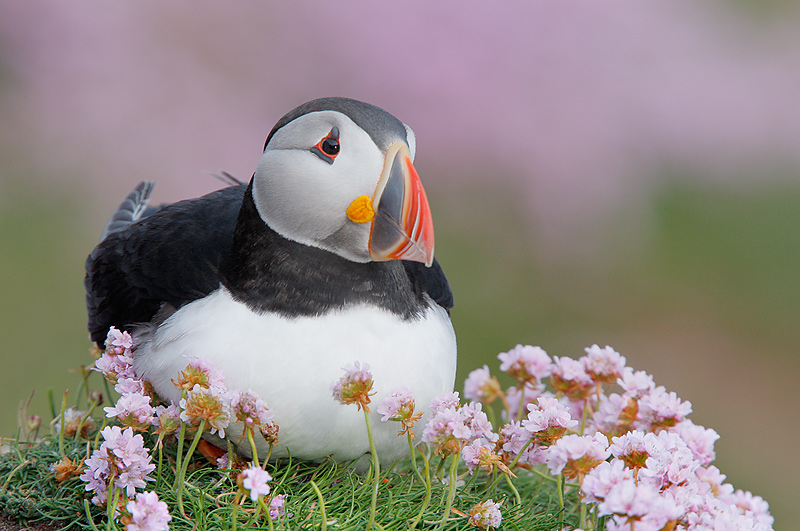
Atlantic Puffin in sea pink, Saltee Island, Ireland
Image copyright 2008: Arthur Morris/BIRDS AS ART
Canon 400mm f/4 IS DO lens with the 1.4X II TC (handheld) with the EOS-40D. ISO 400. Evaluative metering +2/3 stop: 1/500 sec. at f/8. Fill flash at -2 stops.
Working on a steep slope while hand-holding made it fairly easy to get to the right spot without disturbing the birds. But working hand-held at relatively long effective focal lengths (1022mm, here, more than 20X magnification) has several disadvantages. In these situations it is imperative to hold the lens as steady as possible to prevent blurring due to equipment shake. As I had to sit to make my way down the slope, I supported the rig on my bent right knee. But with many of the images (including this one) I needed to use One-Shot AF to come up with the desired composition by focusing on the eye and then recomposing. When handholding at long effective focal lengths and using One-Shot AF you will (as I did on Saltee) likely make many unsharp images as a result of the lens shifting slightly either a fraction of an inch closer to or a fraction of an inch farther from the subject. That is why we strongly recommend the use of a tripod in whenever possible.
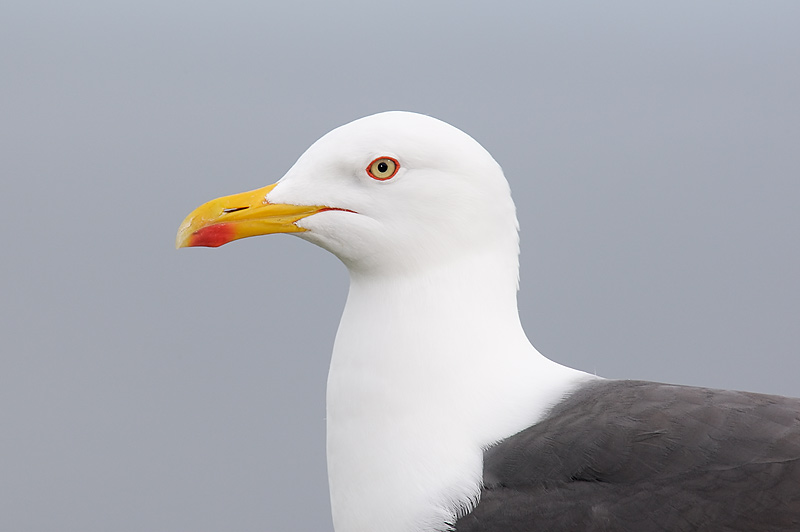
Lesser Black-backed Gull, Isle of May, Scotland
Image copyright 2008: Arthur Morris/BIRDS AS ART
Canon 400mm f/4 IS DO lens with the 2X II TC on the Gitzo CF 3530 LS tripod and the Mongoose M3.5. with the EOS-1D MIII. ISO 400. Evaluative metering +1 stop: 1/500 sec. at f/10. Fill flash at -2 stops.
When using the 2X TC I will usually stop down a bit as I did here if I have enough shutter speed to ensure a sharp image.
WILD BRITAIN TRIP REPORT & PICTORIAL
The Zegrahm's Wild Britain Cruise was a blend of natural and human history. Some of the participants complained that there was too much time spent on culture and human history while others complained that there was too much emphasis on birds and birding. It would seem, therefore, that Zegrahm's achieved perfect balance. Though I enjoyed many of the ancient ruins and the castles and loved the Kirkwall, Scotland Pipe and Drum Band and the Scottish Fiddle group, you can guess which group I was in... In any case, we visited many remote and wild islands, each one incredibly beautiful and most harboring huge seabird colonies. Our landing on one of Scotland's Flannan Islands typified the very best locations for bird photography. Landing is possible only with very calm conditions and fortunately my incredible BIRDS AS ART good weather karma prevailed not only in the Flannans but for the entire voyage as well. We went ashore ten to a Zodiac. The Zegrahm's landing team met us at the base of a steep, tall, and decrepit set of concrete steps. They had ropes set in place and had laid out towels for better footing. And when you needed a hand over the spots where the steps had simply crumbled away, there was always someone stationed there to help. And best of all, the photographers had their tripods and lenses carried to the top of the steps. Once we were halfway up the slope we were greeting by thousands of Atlantic Puffins. At times, while in flight, they resembled mosquitoes. And so it went.
Island after island, sea stack after sea stack, gannetry after gannetry, we were all stunned by the physical beauty that we encountered. The names of the individual locations are already blurred in my mind.
In addition it was great sailing again with world renowned seabird expert Peter Harrison and his wife Shirely Metz. And it was great seeing Zodiac driver and all around good guy Rusty and marine sciences expert Rick Price again; I had met them both on the January 2007 Falklands/South Georgia/Antarctica expedition. Harvard group leader Andrew Berry did some great programs on evolution and had a keen sense of humor, as did the ship's Captain, Peter. Peter did a great job of putting the Island Sky in perfect position for viewing the various seabird colonies. And the Island Sky was a fabulous vessel with LARGE staterooms, a great staff, and incredible food. All in all, it was a superb and memorable experience, one that I can recommend to anyone who would like to get a taste of Wild Britain.
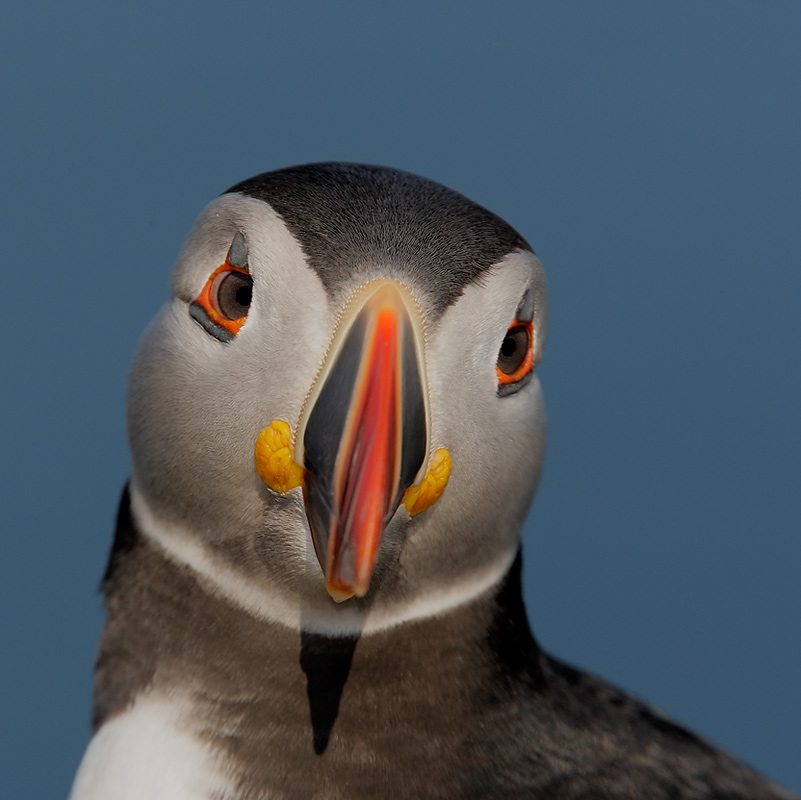
Atlantic Puffin, square head portrait, Flannan Islands, Outer Hebrides, Scotland
Image copyright 2008: Arthur Morris/BIRDS AS ART
Canon 400mm f/4 IS DO lens with the 1.4X II TC and the EOS-1D MIII on the Gitzo CF 3530 LS tripod and the Mongoose M3.5. ISO 400. Evaluative Metering at zero: 1/640 sec. at f/8 set manually.
I made many images of puffins in flight and many tight head portraits like the one above but in retrospect wish that I had created some wide images of an entire hillside covered with puffins...
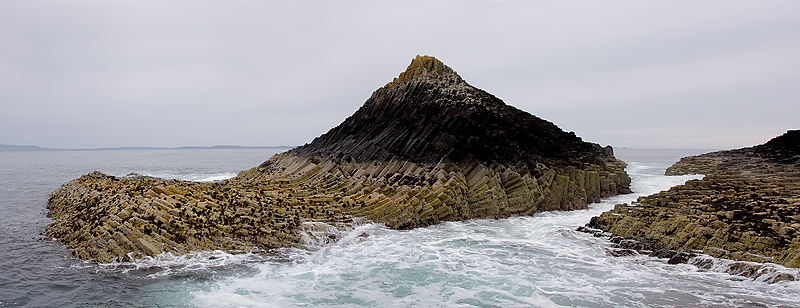
twisted basaltic columns, Staffa Island, Scotland
Image copyright 2008: Arthur Morris/BIRDS AS ART
Two frame stitched panorama. Original images created with the Canon 24-105mm IS L zoom lens (handheld at 24mm) with the EOS-40D. ISO 400. Evaluative Metering +1/3 stop: 1/250 sec. at f/13.
We saw and photographed many way-cool geologic features.
BPN
We are continuing to work hard at providing honest critiques done gently. And, as the post by Dave Phillips below shows, we are both succeeding and appreciated.
I much appreciate your comments on my recent work. It is refreshing to have honest critique and at the same time get a little positive reinforcement when due. The constant swapping of pats on the back that are prevalent at other sites gets old fast and nothing is learned. Thanks.....a bunch! Dave in Louisiana
